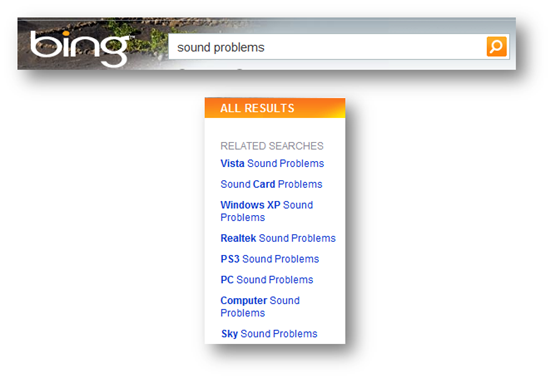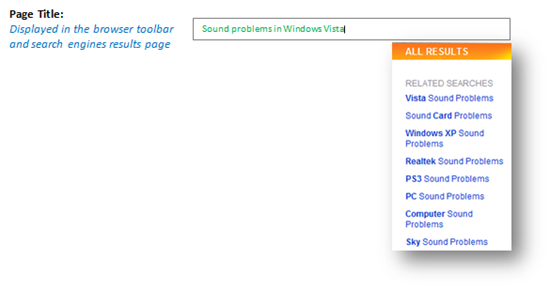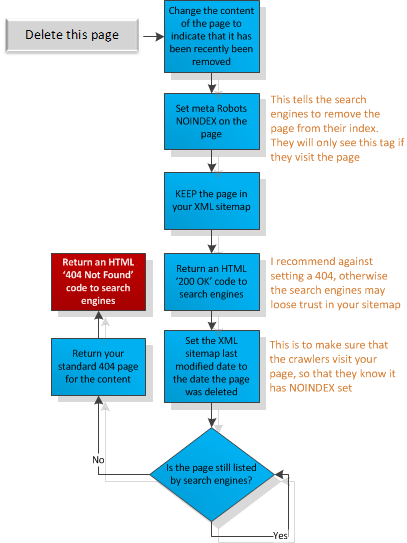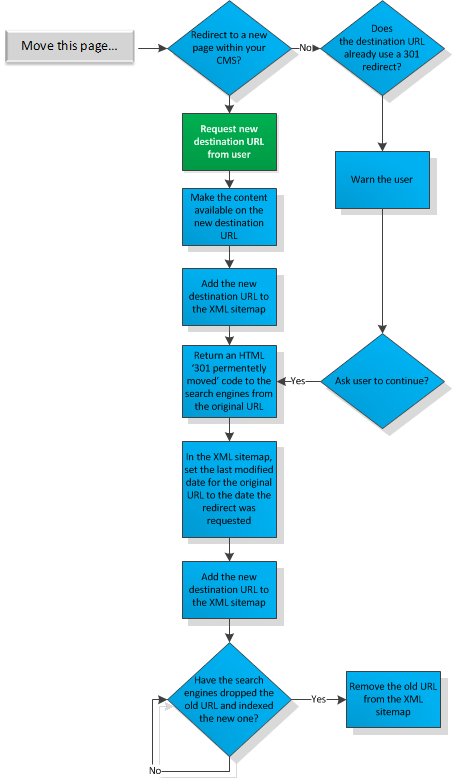5 SEO features for your Content Management System
 Imagine you have just received the keys to a shiny new, custom built, special edition sports car which you have had on order for months. You have the keys in your hand, the car is sitting on your drive way, the sun is shining and you’ve got a free afternoon…what do you do?
Imagine you have just received the keys to a shiny new, custom built, special edition sports car which you have had on order for months. You have the keys in your hand, the car is sitting on your drive way, the sun is shining and you’ve got a free afternoon…what do you do?
1) Leave the car sitting on the drive and spend a few hours reading through the detailed user instruction guide
2) Slam the front door of your house, get in the car and take it for a spin around the neighbourhood?
If you are like 99% of the people I presented to a couple of months ago, you would go for option 2. The lesson? No matter how good your instructions/guidelines are, you cannot guarantee that every use will read them. In fact, I can guarantee that the majority will not!
I delivered a presentation internally at Microsoft about content management systems (CMS) and SEO, here are the top 5 CMS features I recommended to increase the likelihood of content production teams considering SEO whilst using a content management system…
1) Auto title length highlighting
It’s easy to set a rule of having titles less than 65 characters in length, however it is important that users understand why this is necessary when they are creating content (otherwise they will find a reason NOT to conform to it). We are currently developing a concept to show the title text as green to start with, then change to orange as the length approaches 65 characters…
And then red along with a warning message when the 65 character limit is passed…
The hyperlink provides information about why titles should be less than 65 characters, and how that helps the content rank better. A surprisingly high number of users simply don’t realise that the primary purpose for the page title is for search titles! Once they are informed of this, it is difficult for them to find a reason why the title should be longer.
2) Warn about similar/duplicate content
As your site matures, content teams grow and the amount of published content increases it becomes more and more difficult to keep track of previously published pages. When creating a new page it is important to find similar content which may need to be redirected to the new page to avoid duplicate content, or which may remove the need to create the new page completely. Similar/related content is also useful to identify for cross linking opportunities.
Rather than trying to educate users to check for duplicate/similar content each time they create a new page, why not automatically warn them about content directly in the content? This could be achieved at a simplest level be simply using the Bing API to run a site search on your site based on the keywords in the title of the page.
If Bing considers a particular page on your site to be relevant to the keywords in the title of the page you are creating, the chance are that the previously created page is a good candidate for cross linking or redirecting.
3) Allow keywords in URLs
It is very common to see content management systems which generate a URL which looks something like this…
https://www.mysite.com/content.aspx?id=1234
…which does not provide any indication as to the content of the page, and misses an opportunity to increase ranking by getting keywords in to the URL.
Whether you achieve it by allowing your users to enter their own URL for each page created, or by automatically generating the page name based on the page title, make sure that your URLs do not fall in to the trap of being non-descriptive and against SEO recommendations. A great example of a system which generates great SEO friendly URLs is the Wordpress blogging platform. In Wordpress the URLs are generated based on the page title, e.g….
https://www.chrism.com/blog/2010/04/03/inamo-interactive-table-restaurant/
Of course steps need to be taken to ensure that page titles are not duplicated, of which there are two commonly used methods…
- Do not allow duplicate page titles (this is good for SEO anyway)
- Add a unique identifier to the end of the URL, e.g…
www.mysite.com/how-to-write-urls-01231
4) Auto suggest keywords
Have you noticed the Bing ‘Related Searches’ box shown every time you make a search?…
These searches may or may not contain the original keywords, and are based on Bing’s analysis of common customer intent (based on previous search behaviour). The FIRST thing I love about this is that it provides you with easy access to related search queries which you might want to consider for any given search. The SECOND thing I love is that this data is also available programmatically via the Bing API. I am not (much of) a developer, so I have not yet tried this myself, but I imagine it would not be too difficult to pull in this data and present it to users of a CMS as they type page title (please check to make sure you are not violating the terms of use for the API)…
If you have a large website, it may even be possible to generate this data yourself based on the internal search strings from your own customers. The advantage with this approach is that you could enhance the data with actual customer search volumes so that your CMS users could prioritise some phrases over others…
Getting users to research keywords when creating content is one of the most challenging tasks in my job, however integrated keyword suggestions directly in the the CMS in this way would make it MUCH easier.
5) Content lifecycle management
The only constant in life is change…
During the lifetime of your website, you can be almost certain that there will be a need for content to be moved or removed. Whilst content management systems typically enable certain users to do both, they rarely initiate an essential to inform search engines that a piece of content has been moved to a new location, or to prompt them to remove a page from their index. Here are a couple of process flows to show what your publishing systems need to do in order to effectively move and remove a page for search engines…
Chris Moore is a Program Manager working on Search Engine Optimisation at Microsoft. Follow him on Twitter








